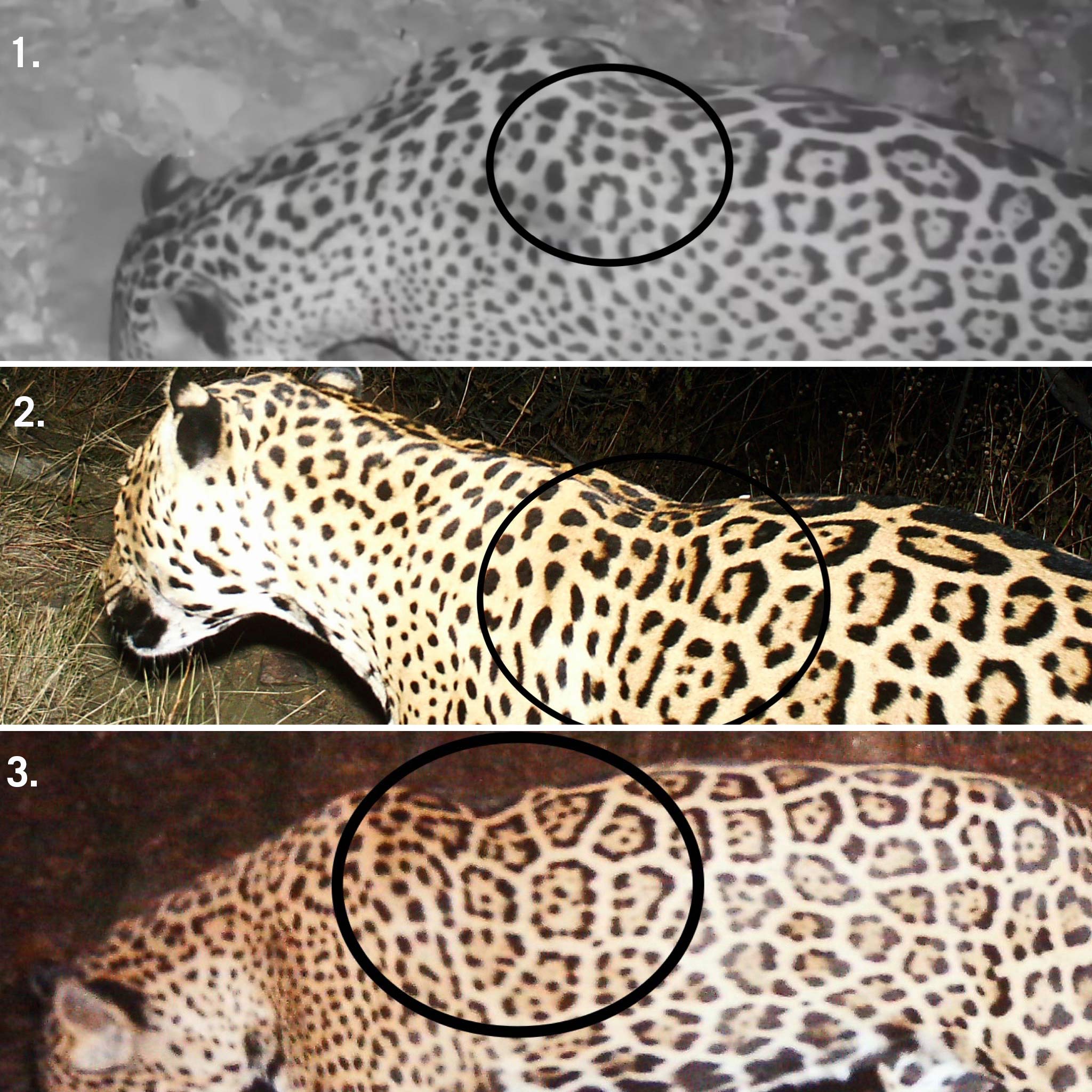 VIEW LARGER Based on rosette or spot analysis conducted by the Center Biological Diversity, a new jaguar has been detected in southern Arizona. From top to bottom is the new cat, Sombra and El Jefe.
VIEW LARGER Based on rosette or spot analysis conducted by the Center Biological Diversity, a new jaguar has been detected in southern Arizona. From top to bottom is the new cat, Sombra and El Jefe. The Center for Biological Diversity has confirmed a new jaguar in southern Arizona.
The previously unknown feline was captured roaming just north of the US- Mexico border on wildlife enthusiast Jason Miller’s trail camera last month.
Miller, who is known for his YouTube channel, “Jason Miller Outdoors,” has captured a variety of wildlife, including ocelots in the past.
This is the eighth jaguar to be identified in the state in the past three decades.
Russ McSpadden with the center said that it is likely that the jaguar came up from somewhere in northern Mexico in the last year.
“Any jaguars we’ve had here in the United States, since at least 1963, have had to come from the population in Mexico,” McSpadden said.
The last female born in the United States was killed in 1963 McSpadden added that there has not been a breeding population north of the US-Mexico border since then.
The center was able to conduct a rosette or spot analysis of the previously unknown cat, based off of images captured by the trail camera.
“Rosette analysis is a really valuable tool for keeping track of individual jaguars over time, which can be really tricky otherwise because jaguars have these huge territories and they span both sides of the border,” McSpadden said.
Requiring a large group of photos to reference during the analysis, McSpadden said he was able to compare photos of the new jaguar’s left flank, to photos of known cats Sombra and El Jefe.
“These definitely did not match making this a new jaguar,” McSpadden said.
Jaguars are native to Arizona's Sky Island mountain ranges and Americas.
In December 2022, the center petitioned the US Fish and Wildlife Service to designate more critical habitat in Arizona and New Mexico.

By submitting your comments, you hereby give AZPM the right to post your comments and potentially use them in any other form of media operated by this institution.